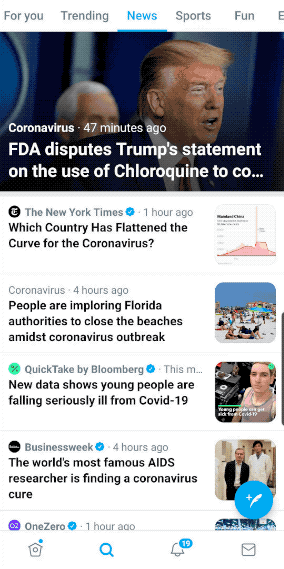This story is part of Science Friday’s coverage on the novel coronavirus, the agent of the disease COVID-19. Listen to experts discuss the spread, outbreak response, and treatment.

As new cases of coronavirus pop up across the United States, and as millions of people must self-isolate from family and friends at home, one place many are turning to for comfort and information is their news feed. But our regular media diet of politics, sports, and entertainment has been replaced by 24/7 coverage of the novel coronavirus pandemic.
Nearly every outlet is covering the pandemic in some way—celebrities live streaming their self-quarantine, restaurants rolling out new health practices and food delivery options, educators and parents finding ways to teach kids at home. There’s an overwhelming number of ways the media has covered the virus. But on top of that, there’s also blatant misinformation about the virus distracting us from the useful facts. It’s all appearing in one big blur on Facebook or Twitter feeds. And it doesn’t help that nearly every few hours we’re getting important, and often urgent, updates to the evolving story.
This week, guest host John Dankosky speaks with two scientists who can help fact-check your news feed. Angela Rasmussen, assistant research scientist and virologist at Columbia Mailman School of Public Health, and Akiko Iwasaki, professor of immunology at the Yale University School of Medicine give us a clearer picture of the coronavirus news this week.
Source: Friday Science

No comments:
Post a Comment